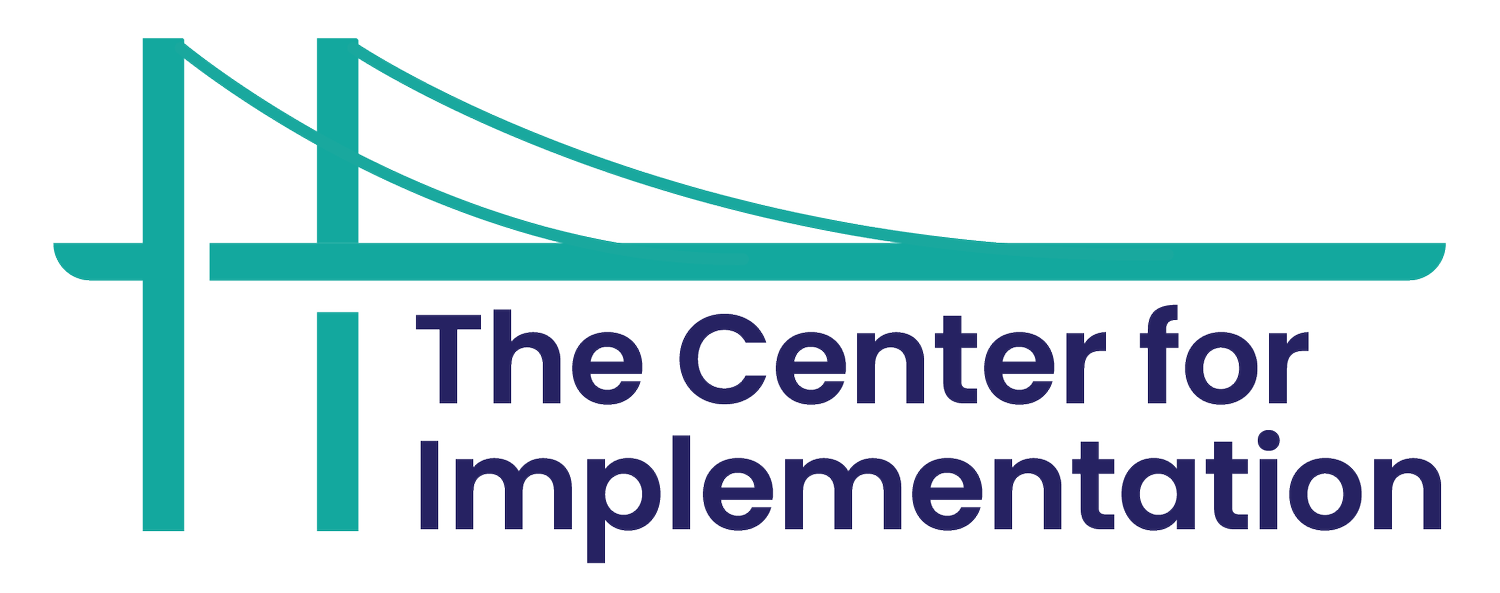A Deep Dive Into Implementation Strategies: How to Select, Combine, and Backmap
By Dr. Sobia Khan, Director of Implementation
4-min read
We at TCI truly have the privilege of working on and understanding a diversity of implementation initiatives at multiple levels on a multitude of topics globally. A commonality across this work is that we have recognized, and therefore always emphasize, the importance of understanding how to select implementation strategies. In fact, when people ask us the one thing they should take away from our workshops and courses, we usually say, “The process of selecting strategies!”
Why is that? What we often see, regardless of what people are working on, is that when tasked with an implementation plan, teams tend to rely on the strategies that they are familiar with – the most common ones being education and training. If knowledge and skills are key determinants of change, then these implementation strategies can be very impactful. If there are other key determinants, it may be that the other implementation strategies are required, or the strategies selected may need to be operationalized in different ways. Therefore, being more strategic about how we select strategies is fundamental to implementation planning.
What purpose do implementation strategies serve?
The very simple explanation of why we go through the process of selecting implementation strategies is that in the implementation process, we want to make the change easier. We do this by utilizing strategies that address people’s barriers to change and leverage their facilitators. When doing this prospectively, it helps to use a process model like implementation mapping or the StrategEase Pathway to guide you through the stages of selecting strategies. If you have already started implementing, the good news is that you can still reflect on your strategies in a retrospective way. We at TCI have started calling this process “backmapping,” – meaning in a typical planning process, you start with understanding your barriers and facilitators to change and end with the selected strategies, whereas in backmapping, you have a strategy in mind and work backwards to reflect on whether that strategy is truly targeting the barriers and facilitators that people have been experiencing.
Backmapping implementation strategies to barriers
Here is a powerful example of backmapping. Recently, I was facilitating a workshop about a national initiative where education was already being deployed as the primary implementation strategy. I asked the question, “What are we assuming about people’s barriers if education is the primary strategy?” and the response was, “That they don’t know – but we know that they know, so knowledge isn’t actually the primary barrier.” With these lightbulb moments, we were able to discuss what the primary barriers actually were – emotions and beliefs about consequences – and discussed how we could adapt the existing education strategy and add another strategy to help address these barriers.
Identifying strategies at multiple levels and blending implementation strategies
The process of thinking through barriers and facilitators and linking these with strategies is often easy for most people to grasp because once it is learned, it feels like common sense and intuitive. Where people tend to feel lost is in identifying and operationalizing strategies.
The first reason for this is that there are many potential implementation strategies that might be identified at multiple levels. For a complex initiative, you may have to identify several individual-level implementation strategies (i.e., strategies that target personal barriers and facilitators), setting-level implementation strategies (i.e., strategies that target the settings in which people work or live, and are therefore more collective/institutional and create enabling contexts for implementation), and system-level implementation strategies (i.e., strategies that address aspects of the system that can foster an enabling macro context for implementation).
To manage this, we recommend many ways to streamline how many strategies to select and enact:
Include prioritization as a process; for example, prioritizing which barriers and facilitators to target rather than attempting to target all of them
As part of this process, find levers for change as priority areas to target with implementation strategies. Understanding that barriers and facilitators are connected to one another and that removing particular barriers and leveraging particular facilitators can create a “domino effect” (e.g., addressing leadership challenges can help address multiple barriers related to resourcing, culture and climate, etc.).
Understand the concept of multifaceted strategies; that within one strategy you can target multiple barriers and facilitators. An example is that in the national initiative described above, the team decided to maintain education but include opinion leaders as people delivering education, embed different types of messaging other than education messaging, include breakouts that can help people discuss the emotional impact and come up with action plans, and include modeling.
The future of implementation strategies in implementation science
Many experts in the field are continuing to conduct research that will build our knowledge about implementation strategies. We know that some people are looking more closely at change determinants and mechanisms and how these link with strategies. At TCI, we have been thinking specifically about contextual “strategies” and what these strategies look like. Our initial thinking is that many of these strategies are actually processes (e.g., making adaptations) or additional initiatives that can help build enabling contexts for change (e.g., building readiness). We have also been thinking about the underlying intentions of strategies, and how we can make strategies come alive with these intentions (more to come here!).
Another area is building better tools to help manage the process of selecting strategies. Our StrategEase tool is a great team tool to use when thinking about individual level strategies, and there is more to come as we continue working on contextual strategies for change.
This article was featured in our monthly Implementation in Action bulletin! Want to receive our next issue? Subscribe here.
